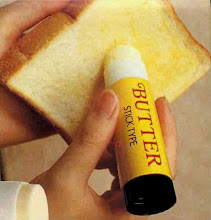
Serves four
Let me admit right away that this recipe is not Moroccan at all. It’s not based on a Moroccan recipe, but rather, it’s an invention rooted in how I imagine a Moroccan cook might prepare chicken. I haven’t actually ever had chicken prepared by a Moroccan, but it doesn’t really mater . . . this is one tasty chicken dish.
You probably noticed that the name of this dish refers to “tights.” I refer to the chicken thighs as “tights” as an homage to my immigrant Polish mother who, notwithstanding her quite good English, and to everyone’s amusement, always pronounced “thighs” as “tights.” I love the mistakes that people make when trying to speak a non-native language. It leads to a great deal of hilarity, confusion and discussion; all highly desirable outcomes. Otherwise, you would simply get your question answered or point across and that would be that. Boring, eh? Case in point: When Carolyn and I made our second trip to Buenos Aires, we came prepared having learned a few Spanish words and phrases. Among these was the phrase “mas despacio,” which means “more slowly.” We had had plenty of experience hearing fast-spoken Spanish, which we found impossible to understand and planned to say mas despacio, por favor often, to slow people down. Instead, we wandered around Buenos Aires politely insisting “mas espacio, por favor,” which means “please, more space.” Of course, this lead to all sorts of confusion. But, it did slow people down because they recognized that we really had little grasp of their language.
A technical note:
I am not a fan of chicken fat and trim as much from the chicken as possible. The first and second photos (below) show the before and after trimming. I prefer that the little pile of fat ends up in the trash rather than in our veins.
Another technical note: Turn on the exhaust fan. If you have a recirculating kitchen fan, open a window. This recipe is aromatic and can generate a bit of smoke.
The final technical note: I’m not sure what sort of wine to suggest with this meal. Perhaps a harder liquor is in order. Although alcohol is not permitted in Muslim households, I know they have alcohol in Casablanca, since I saw the movie at least a couple of times.
The recipe . . .
8 boneless/skinless chicken thighs
salt
garlic powder
black pepper
cinnamon
cardamom
paprika
cumin
ground red pepper (cayenne)
sugar
3 tablespoons olive oil
What? No quantities? No, just sprinkle the chicken evenly with spices. Be generous. The quantity of each spice is about the same, except be sparing with the cayenne pepper. Arrange the chicken, spiced side facing the pan. Heat the olive oil in a large skillet to medium heat and sprinkle more spices over the bare side chicken. Sauté until the chicken is browned (nearly blackened in appearance; five or six minutes), reduce heat to medium and turn chicken. Cook another five or six minutes.
Serve with couscous and a side of steamed and lightly buttered carrots OR slices of zucchini. This is how I imagine I would make chicken tights if I was Moroccan.
Leftovers: This dish is ideal for leftovers. Simply place into a skillet with the couscous, add a couple tablespoons of water, cover and heat on low heat until warm. Remove cover, turn up the heat to medium and cook until the liquid has evaporated.
Couscous
I like to use the large “pearl” couscous. Lightly brown couscous in 3 tablespoons of olive oil in a skillet. Add one diced onion and water (or chicken broth)(quantity per instructions on package), one (Knorr’s) vegetable bullion, ¼ teaspoon (or more) of garlic powder, salt, 1-1/2 tablespoons butter, and one finely diced carrot. Cover and cook over low heat until couscous is tender. Remove cover, increase heat to medium and sauté over moderately high heat until slightly browned, stirring often.
Zucchini
Slice ¼” thick on an angle. Push aside chicken once it is near the end of the cooking time and arrange zucchini slices in skillet. Cook for 4 minutes per side.

Chicken, ready to be cleaned of fat

Chicken, cleaned of fat. Note the 2 tablespoons of fat removed (circled)












